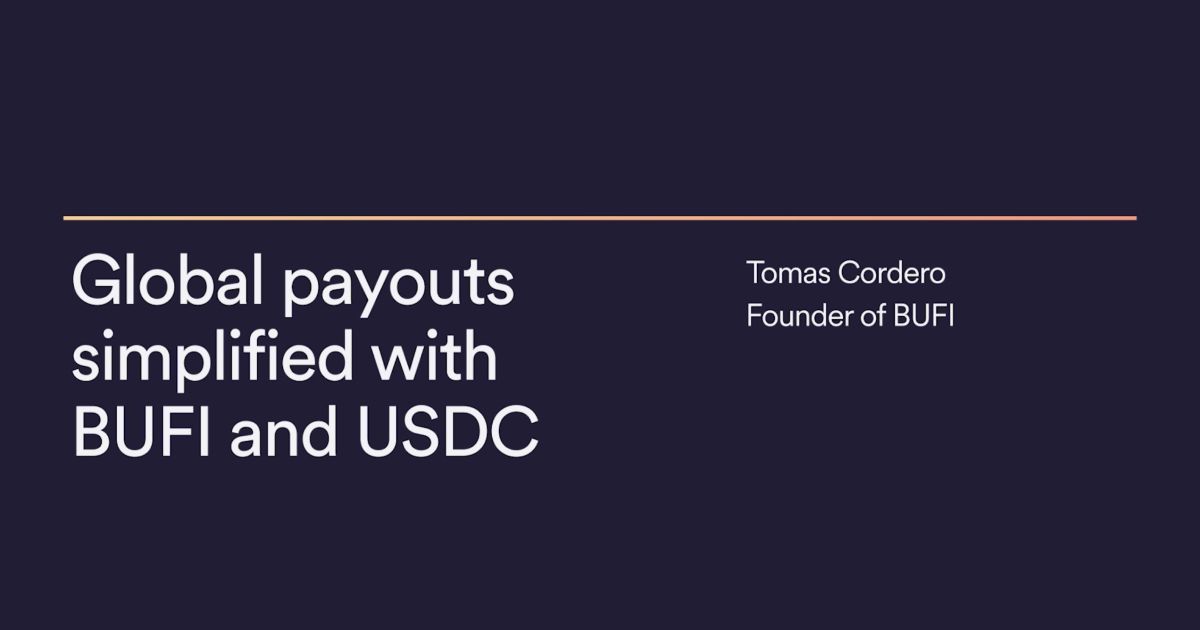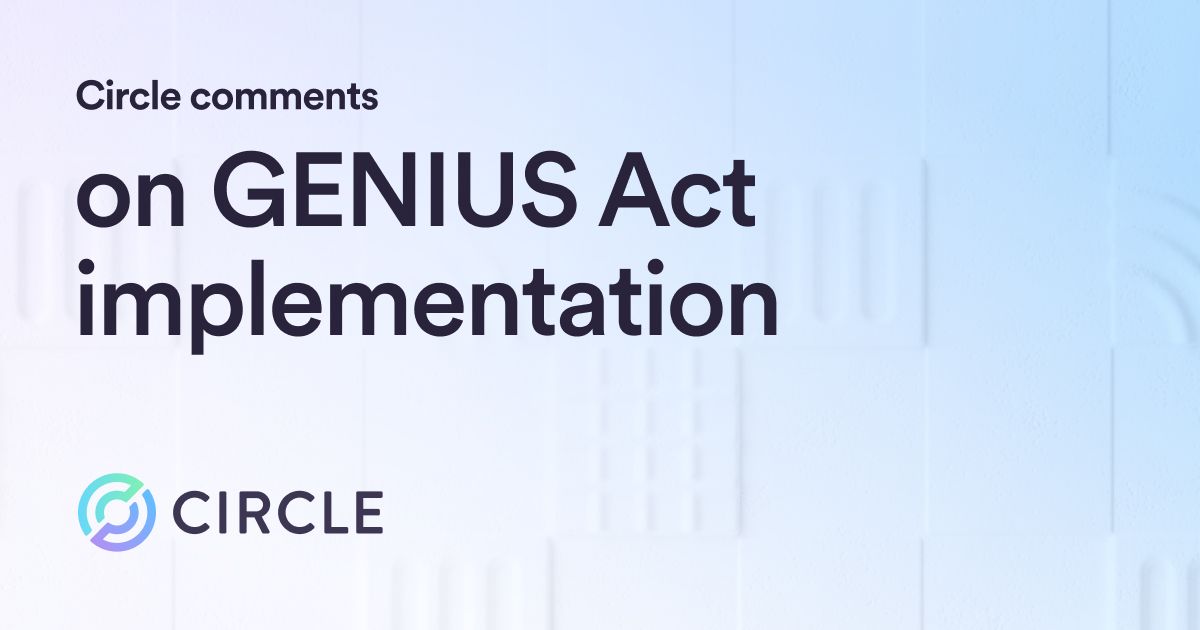The GENIUS Act is poised to help regulated stablecoins become core infrastructure for global finance. See how banks can partner with Circle to use USDC.
.jpg)
The future of money is programmable, and with the passage of the GENIUS Act, regulated stablecoins are fast emerging as core infrastructure for the global financial system. This presents immense opportunities for banks while raising the question of how they can best take advantage.
The first decision centers around whether banks should build their own stablecoin, or partner with an issuer that has already achieved deep network effects and tackled the complex operational and compliance hurdles.
Here is why the most forward-looking banks are seeking to partner with an established, globally regulated issuer.
Stablecoins are financial infrastructure, not competition
Stablecoins should be viewed as a complement to banks, and not a threat. In the U.S., the GENIUS Act forbids stablecoin issuers to pay interest to holders, prohibits lending of reserves, and requires both bank and non-bank issuers to maintain standalone issuing entities. Stablecoins sit off-balance-sheet and do not directly affect a bank’s funding franchise.
USDC functions more like modern settlement infrastructure than commercial bank money. It is designed to enable banks, businesses, and institutions to move value securely, almost instantly, globally, and with 24/7/365 uptime.
Beyond the role of holding stablecoin reserves, banks now have compelling new business opportunities:
- Upleveling cross-border payments for business and retail customers
- Serving as a gateway to the tokenized world
- Embedding stablecoins into products to serve customer demand
- Enhancing treasury and liquidity management
- Building “on- and off-ramps” that connect stablecoins with the banking system and existing, closed-loop payment and settlement networks
Distribution and network effects drive value
Under GENIUS, banks can issue their own proprietary stablecoins, but the hurdles are immense and include regulatory approval, liquidity building, distribution, network adoption, and establishing standalone issuing subsidiaries. Without tackling all of these and utilizing open blockchains, bank-issued stablecoins risk becoming stranded assets.
Similarly, white-labeled stablecoins have limited distribution and have struggled to gain adoption. They are often designed to work only within a single, closed-loop ecosystem and disaggregate bedrock risk management functions. This creates integration drag, trust gaps, and compliance fragmentation, all of which undermine the business case for stablecoins.
USDC, by contrast, already has scale, network effects, and compliance infrastructure in place. It is the world’s largest regulated1 stablecoin, has deep global liquidity and settlement capabilities, and is issued by regulated affiliates of Circle, a global financial technology firm that has the deep regulatory experience to meet the standards embodied in the GENIUS Act.
Critically, stablecoins with distribution and network effects can serve as connective tissue in a future where multiple forms of tokenized money may co-exist side by side. As banks contemplate whether to tokenize their deposits, stablecoins can play a key role by connecting them to other banks and payments ecosystems.
What banks get when they partner with Circle
By partnering with Circle, banks can immediately use and offer customers the benefits of stablecoins without incurring the cost, complexity, and risk of standing up their own or choosing a white-labeled offering with little to no utility.
The breadth of USDC’s existing distribution means that it works right out of the box, whether a bank is seeking to settle payments, issue tokenized assets, or enable clients to access onchain finance. By choosing Circle, banks plug right into a thriving global ecosystem and avoid the cold-start problem of proprietary and white-label stablecoins. With USDC, banks inherit trust, liquidity, and adoption on day one.
Strategic implications for banks
With the benefits of partnership clear, here are some reasons for banks to move forward.
- Revenue growth. Stablecoins create new fee and balance sheet opportunities in custody, payments, FX, and transaction banking.
- Customer retention. Embedding stablecoins keeps high-value corporate and retail customers within the bank’s ecosystem.
- Competitive positioning. Fintechs, neobanks, and traditional banks are already moving aggressively. Banks that hesitate risk falling behind as money shifts to digital rails. Circle offers speed to market through its network of licensed entities and global settlement system backed by deep liquidity in secondary markets.
- Regulatory safety. Partnering with Circle to use USDC allows banks to participate in the stablecoin economy while Circle handles issuance, operations, and compliance with clear, prudential federal regulation.
The bottom line
With the GENIUS Act now law, banks have clarity to partner with established issuers like Circle to grow and innovate, rather than looking purely through the either/or lens of “issue or sit on the sidelines.” The decision is whether to lead or lag in this transition. Building a proprietary stablecoin is a costly, multi-year endeavor with uncertain payoff, and white-label stablecoins face significant cold-start hurdles.
Circle is a stablecoin-first company with hundreds of staff dedicated solely to meeting the operational requirements of issuing and managing a regulated global stablecoin. Partnering with Circle to offer and use USDC is a faster, safer path that allows banks to compete, innovate, and grow today. The GENIUS Act has made the framework clear. The opportunity is here. The strategic question is how quickly your bank will act.
1. USDC is issued by regulated affiliates of Circle. A list of Circle’s regulatory authorizations can be found here.




